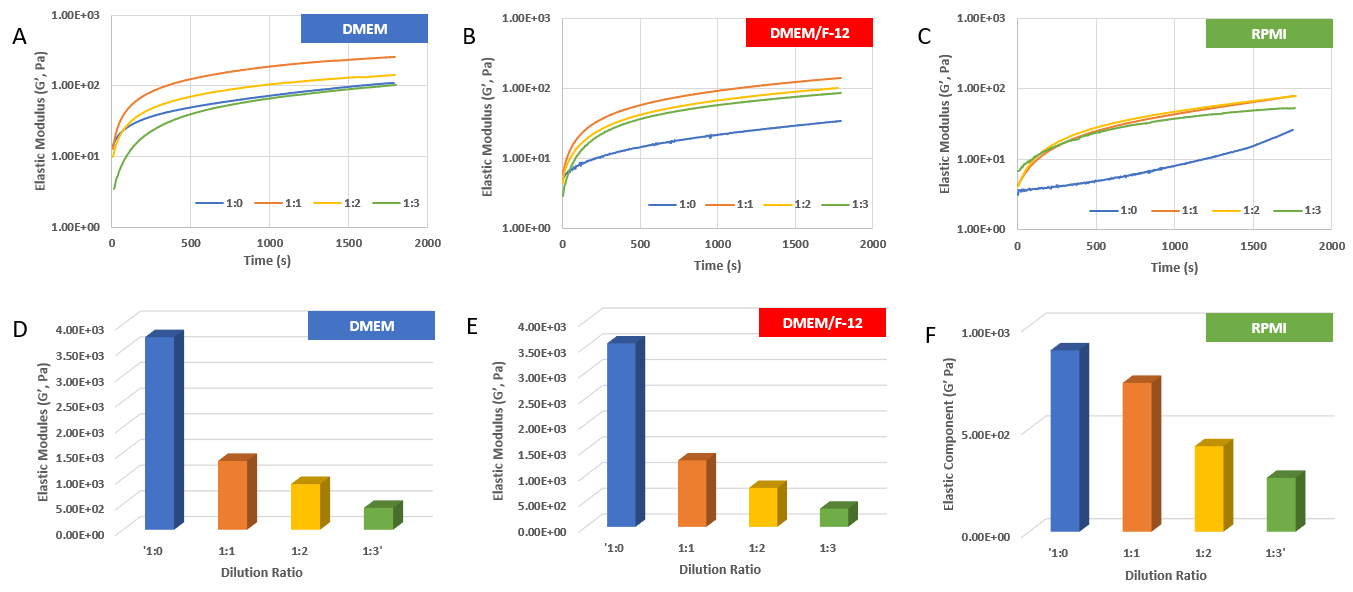We are here to help you enjoy your scientific exploration. Search our frequently asked questions. If your question still has not been answered, email us at support@thewellbio.com.
What is the elastic modulus of the “high-concentration” VitroGels after dilution?
For the high-concentration VitroGel hydrogels, the elastic modulus (G’) can be adjusted from 10 to 4,000 Pa by changing the hydrogel concentration with the VitroGel Dilution Solution. The G’ is about 4000 Pa at 1:0 dilution, 1200-2000 Pa at 1:1 dilution, 600-1000 Pa at 1:2 dilution, 200–500 Pa at 1:3 dilution, and < 500 Pa at dilution higher than 1:3.

Figure 1. Rheological properties of VitroGel RGD with DMEM medium.
A) – C) The gel formation curve after mixing with DMEM (A), DMEM/F-12 (B), and RPMI (C) media. VitroGel RGD was diluted at 1:0,1:1, 1:2 and 1:3 (v/v) with VitroGel Dilution Solution (Type 1) and then mixed with media at 4:1 (v/v) ratio; D) – F) The gel strength after 24 hrs incubation in DMEM (D), DMEM/F-12 (E), and RPMI (F) media. The hydrogel was prepared as method A and incubated at 37°C CO2 incubator for 24 hrs before the rheological test.
The elastic modulus (G’) was tested using a dynamic rheometer. The G’ is different than stiffness (Young’s modulus). A simple conversion between G’ and stiffness is to do a factor of 1:3. Example. 200 Pa of G’ is about 600 Pa of stiffness.
Here is a paper related to the tunability of the high-concentration VitroGel hydrogels: Investigating the Dynamic Biophysical Properties of a Tunable Hydrogel for 3D Cell Culture

